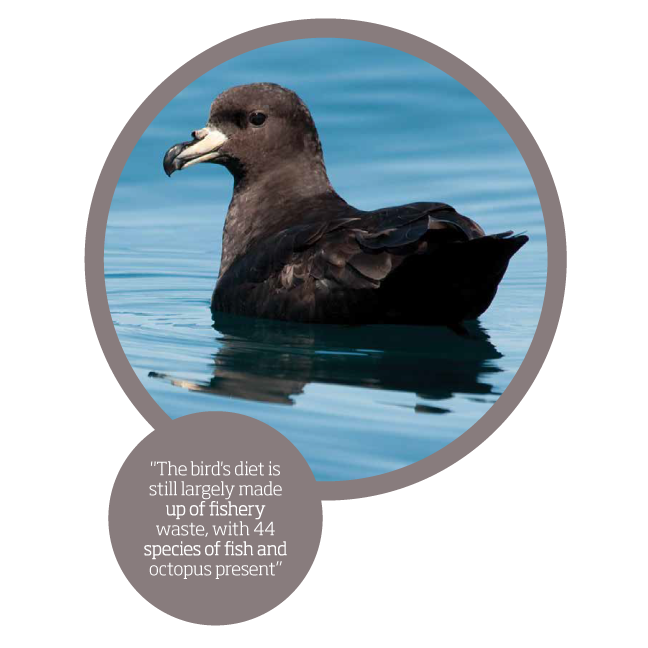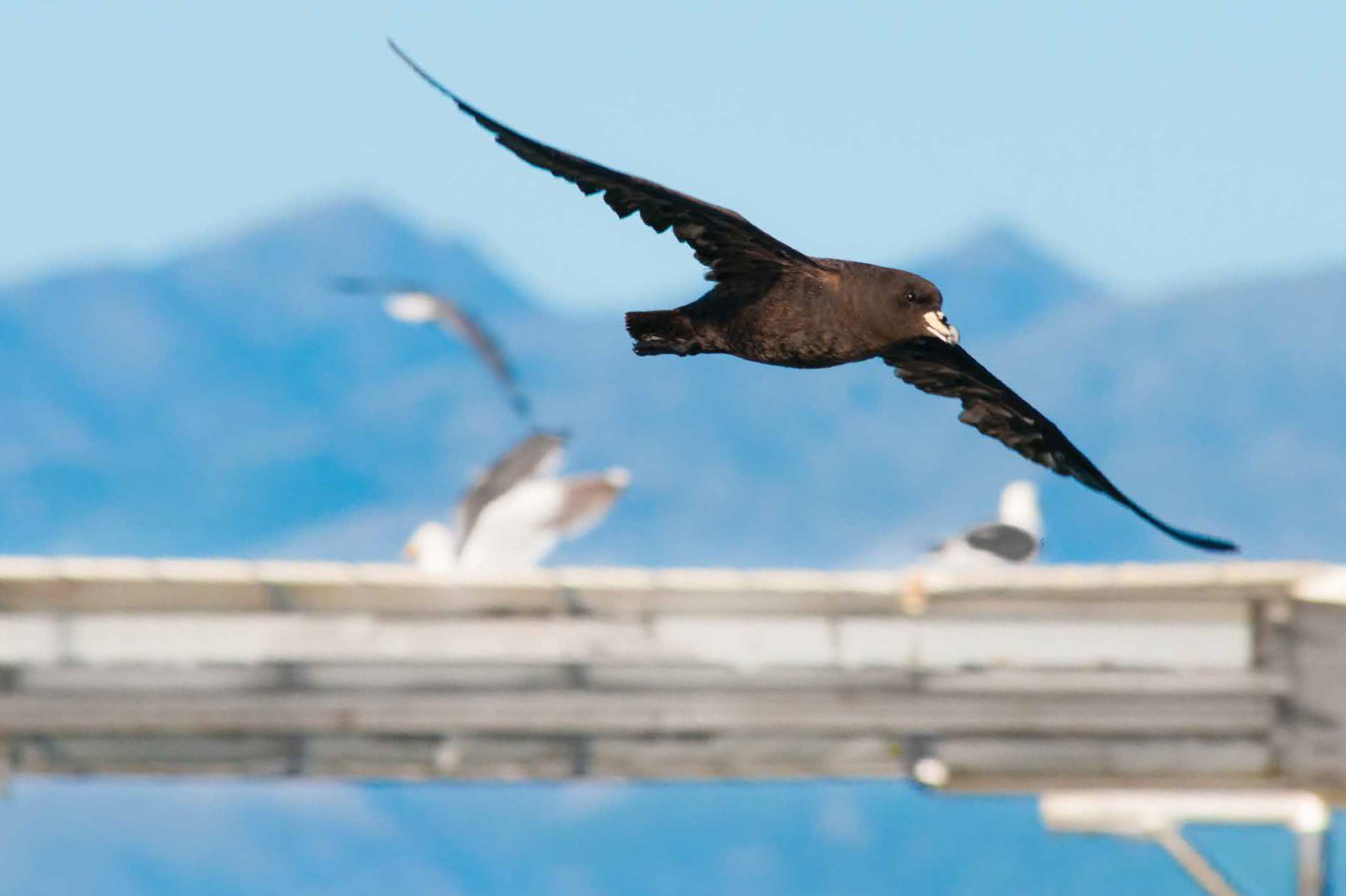Molecular analysis of the Westland Black Petrel’s diet is aiding in the conservation of the small population of rare birds
Unitec senior lecturer Dr Stephane Boyer is intent on ensuring the survival of the Westland Black Petrel/Tāiko (Procellaria westlandica). For two years, he has been utilising molecular analysis to detail the bird’s diet during the critically important breeding season.
[x_blockquote cite=”Paparoa National Park, Punakaiki ” type=”left”]Westland Black Petrel / Tāiko (Procellaria westlandica)[/x_blockquote]
By collecting and analysing non-invasive DNA samples, with help from undergraduate research students, Boyer has been aiming to determine whether the species is still heavily reliant on waste from the fishing industry, as was discovered in a 1998 Lincoln University study by Amanda N. D. Freeman.
The rare bird, which is native to the West Coast of New Zealand’s South Island, is classified as vulnerable by the International Union for Conservation of Nature. If care is not taken to manage its fragile habitat, food supply and the threat of predators, it will risk extinction.
There is an estimated annual breeding population of just 3000-5000 pairs of Petrels.
They fly as far as South America and Australia in the summer and, in winter, return to nest in an area of forest in the Paparoa National Park, south of the tourist hotspot of Punakaiki.
It is the only place in the world where they nest, therefore conserving the area and its birdlife is crucial. The birds bring visitors to the area, with one tour company offering sunrise and sunset tours for those who have travelled from around the world to witness the ‘return of the Petrel’.
Boyer’s research began when he was working at Lincoln University, helping the group Conservation Volunteers to restore and maintain the Petrel’s habitat. This involved replanting vegetation and ensuring that no major development, mining or building would occur in the area.
By finding out the exact contents of the bird’s diet, their food supply could also be monitored. Boyer’s prediction was that he would find different species in the bird’s diet than those found in 1998, due to changes in both the environment and the fishing industry over the last 18 years.
[x_blockquote cite=”Dr Stephane Boyer” type=”right”] “If care is not taken to manage its fragile habitat, food supply and the threat of predators, it will risk extinction”[/x_blockquote]
“I’m interested to see what has changed, whether [the birds] are shifting to something different, whether they are still very much dependent on this fishery waste,” he explains.
“Due to uncertainty in future sea-surface temperature, sh stocks may vary greatly from year to year, which could decrease fishery waste, thereby impacting adult survival during the breeding season.
“In a recent study by Te Papa staff, Susan Waugh found that the main driver of Westland Petrel population growth was adult survival during the breeding season, with hoki fishery catch being a good predictor of adult survival.”
While a four-fold increase in the amount of hoki caught in the area may have increased the bird’s dependence on fishery waste, improvement in fishing practices and
regulatory changes may have lowered the quantity of waste, and future regulatory changes could lower this even further. Since the 1998 study, more advanced collection and analysis methods have enabled a more detailed picture to be taken.
“The diet analysis method used in 1998 required forced regurgitation and could only apply to relatively intact pieces of flesh or skeleton,” Boyer says. “The results, therefore, represent an only partial picture of the Petrels’ diet. We now have much better analysis tools and protocols, so we don’t even need to approach the birds. It is possible to draw a much more accurate and detailed picture of the birds’ diet, including detecting all prey species predated by individual birds.”
Because the birds are at sea during the day, Boyer was able to collect faecal samples from the entrance of their burrows, without disturbing the nests or the birds themselves.

Samples were taken in April and September, the start and end of the nesting season. Boyer hopes to determine what is being fed to the chicks, and what the adults are eating during the incubation period. “That will give us a much bigger picture of what they eat as a species,” he says.
The DNA samples have undergone molecular analysis in the Unitec Applied Molecular Solutions laboratory, followed by next-generation sequencing analysis at New Zealand Genomics Ltd.
Preliminary findings, based on an initial pilot study, show that while the bird’s diet has changed since 1998, it is still largely made up of fishery waste, with 44 species of fish and octopus present. The second, larger set of samples is currently being analysed, with final results expected in June.
contact
Dr Stephane Boyer
sboyer@unitec.ac.nz

Leave a Reply